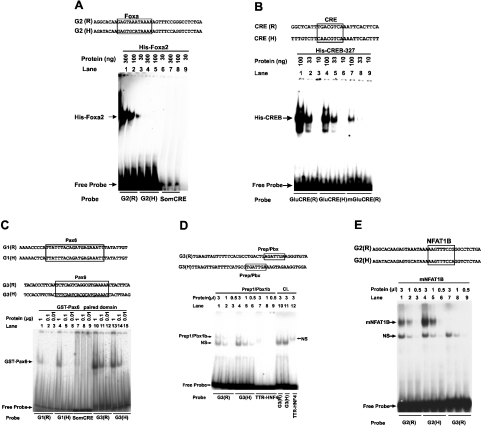Figure 2. Analysis of the interaction between potential regulatory sequences in the 5′-flanking region of the human glucagon gene and recombinant Foxa2, CREB, Pax6, Prep1/Pbx1b and NFAT1B by EMSA.
A comparison of rat and human regulatory sequences. The locations of the putative binding site in the human sequence and the experimentally characterized binding site in the rat promoter are boxed. (A) Binding of the indicated amounts of recombinant Foxa2 to labelled oligonucleotide probes, either the rat G2 [G2(R), lanes 1–3], human G2 [G2(H), lanes 4–6] or somatostatin CRE (SomCRE, lanes 7–9). (B) Binding of the indicated amounts of purified-bacterially expressed CREB-327 to labelled oligonucleotide probes, either the CRE of the rat glucagon gene [GluCRE(R), lanes 1–3], the CRE of the human glucagon gene [GluCRE(H), lanes 4–6] or the rat glucagon gene mutant CRE [mGluCRE(R), lanes 7–9]. (C) Binding of the indicated amounts of purified bacterially expressed Pax6-PD to either the rat G1 [G1(R), lanes 1–3], human G1 [G1(H), lanes 4–6], rat G3 [G3(R), lanes 10–12], human G3 [G3(H), lanes 13–15] or the somatostatin CRE (SomCRE, lanes 7–9) as probes. (D) Binding of the indicated amounts of in vitro co-transcribed/translated heterodimer complex consisting of the homeodomain transcription factors Prep1/Pbx1b or control lysate (CL). The rat G3, G3(R), human G3, G3(H) or TTR gene HNF-4 recognition sequence (TTR-HNF-4) probes were incubated with either Prep1/Pbx1b (lanes 1–3, 4–6 and 7–9) or control lysate (lanes 10–12). (E) Binding of the indicated amounts of in vitro-transcribed/translated NFAT1B to either the rat G2 [G2(R)], human G2 [G2(H)] or rat G3 [G3(R)]. The upper arrow indicates the specific complex; NS, a complex formed with non-specific DNA-binding activity; R, sequence from the rat glucagon gene; H, sequence from the human gene.

